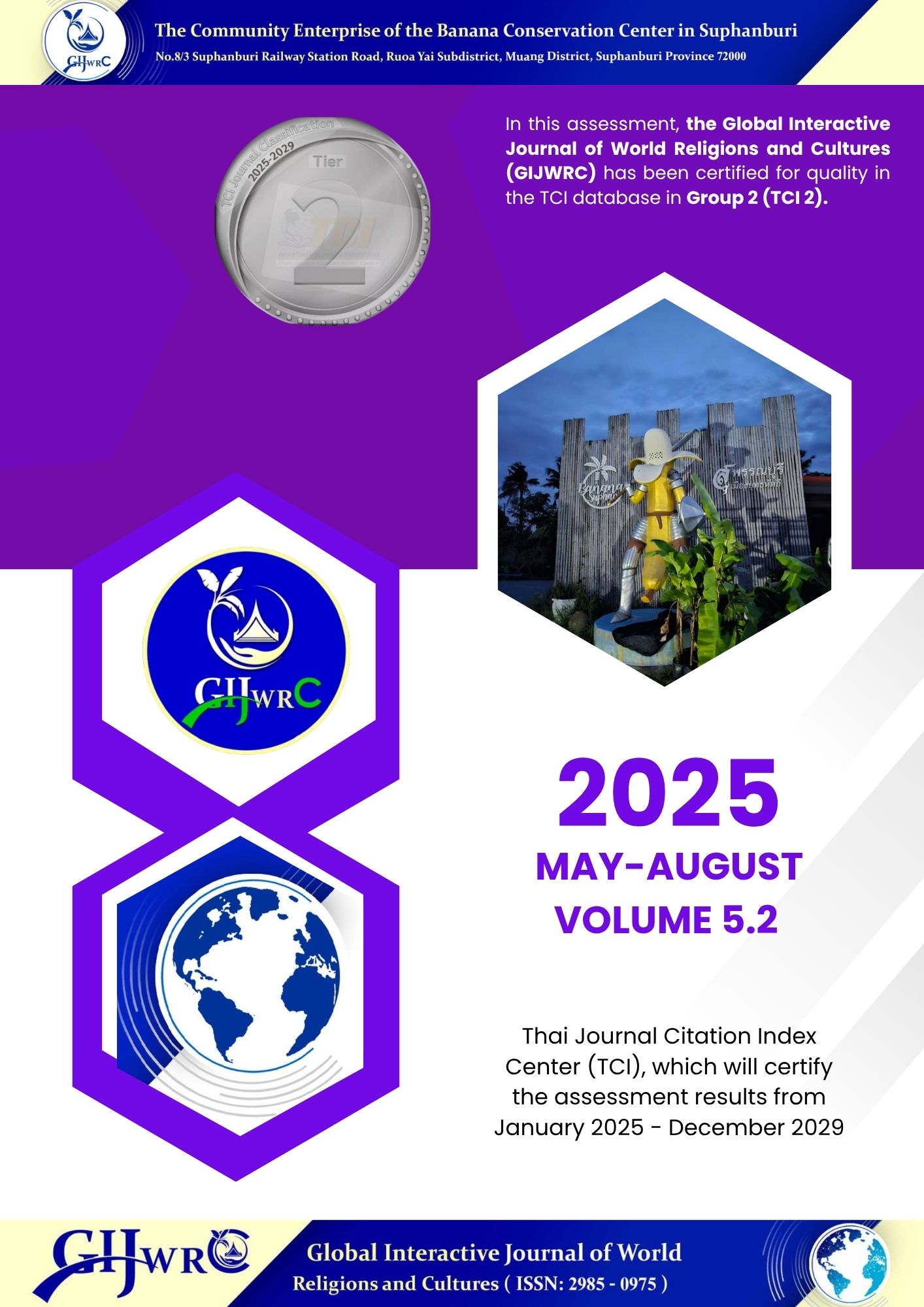STUDYING THE VOCAL MUSIC TEACHING IN THE AI YUEREN MUSIC EDUCATION INSTITUTION FOR MIDDLE SCHOOL STUDENTS, CHINA
Main Article Content
Abstract
Vocal music plays a significant role in Chinese culture, deeply rooted in traditional beliefs and artistic expressions. The integration of vocal training into modern music education not only enhances students’ technical abilities but also fosters an appreciation for the rich heritage of Chinese musical traditions. This study aims to explore the vocal music teaching methods used at the Ai Yueren Music Education Institution for middle school students. The research employs a qualitative approach, focusing on one-on-one private vocal lessons as a primary method of data collection. Through in-depth observations and interviews with key informants—experienced vocal instructors and experts—the study examines effective teaching techniques, student engagement, and the impact of personalized vocal instruction on student development. The key informants include Professor Gong Sujun, a distinguished vocal educator from Guilin University; Ms. Xu Huan, a seasoned instructor specializing in vocal music and music theory at Guangxi University of the Arts; and Ms. Huang Lan, an expert in pop vocal training with extensive teaching experience. Research findings indicate that individualized vocal training allows for tailored instruction based on each student’s vocal range, technique, and musical preferences. Effective teaching methods identified in the study include scientific breathing techniques, resonance training, and expressive interpretation of Chinese and Western vocal pieces. Additionally, the incorporation of traditional Chinese singing techniques with Western vocal pedagogy has been shown to enhance both technical proficiency and cultural appreciation among students. The study concludes that a balanced approach—blending structured vocal techniques with elements of Chinese cultural traditions—offers a comprehensive and effective model for vocal music education. These findings provide valuable insights into optimizing vocal music instruction and preserving traditional Chinese vocal artistry while adapting to contemporary educational practices.
Article Details
References
Chen, D. (2015). Vocal health and performance: A practical handbook. Music and Health Press.
Chu, G., & Bao, A. (2023). Cross-cultural vocal training: Bridging Eastern and Western methods. International Journal of Music Pedagogy, 18 (2), pp. 89-104.
Huang, P. (2005). Traditional Chinese vocal techniques in modern music education. Shanghai Conservatory of Music Publications.
Ma, Y. (2017). The art of vocal expression: Techniques and practices. Journal of Music Education, 45 (3), pp. 123-135.
Su, C. (2017). Technology in vocal training: Tools and applications. Music Technology Quarterly, 12 (1), pp. 34-48.
Wang, F. (2013). Exploring contemporary vocal styles: From classical to pop. Modern Music Press.
Wang, L. (2010). Innovative approaches to vocal pedagogy: A comprehensive guide. Beijing Music Press.
Wu, L. (2015). The role of breath control in vocal performance. Journal of Singing, 71(4), pp. 45-52.
Xu, X. (2002). Foundations of vocal pedagogy: Theory and practice. China Music Education Publishing House.
Yang, L. (2017). Vocal anatomy and physiology: A guide for singers and teachers. Journal of Voice Studies, 22 (3), pp. 67-82.


